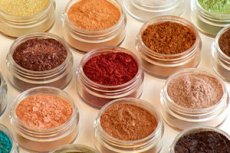Medical expert of the article
New publications
Cosmetic components: Emulsifiers
Last reviewed: 08.07.2025

All iLive content is medically reviewed or fact checked to ensure as much factual accuracy as possible.
We have strict sourcing guidelines and only link to reputable media sites, academic research institutions and, whenever possible, medically peer reviewed studies. Note that the numbers in parentheses ([1], [2], etc.) are clickable links to these studies.
If you feel that any of our content is inaccurate, out-of-date, or otherwise questionable, please select it and press Ctrl + Enter.

When two immiscible media (water and oil) are mixed, a very unstable system is formed. At the first opportunity, it tries to separate into its constituent components. To prevent this from happening, emulsifiers are introduced into cosmetics. The emulsifier molecule has an elongated shape, one pole of which is hydrophilic (facing the water), and the other is lipophilic (facing the oil phase). Due to the peculiarities of their structure, emulsifiers are located at the interface between the oil and water phases, forming a thin layer that prevents the merging of suspended droplets.
Emulsifiers stabilize the emulsion and prevent its separation. Emulsifiers are components that cannot be dispensed with. If the cream is unstable, it not only looks unsightly. It forms large areas on the border of the water and oil layers, where microbes readily settle. In addition, the nature of the distribution of active components changes, which can even lose their activity. Without emulsifiers, it is impossible to create microemulsions that contain microscopic droplets of oils. Such emulsions are well distributed, quickly absorbed and help active water-soluble components reach the deep layers of the skin.
The strongest emulsifiers are detergents - surface-active substances (SAS) with a cleaning effect. Their direct purpose is to dissolve fats during cleaning, washing dishes, washing, etc.
Detergents are some of the cheapest emulsifiers. Almost every cream contains some amount of detergents. They are usually used to enhance the effect of other emulsifiers. When applied to the skin, detergents affect the lipid barrier of the skin in the same way as all other fatty formations - they build into it, disrupt its ordered structure and break it into separate droplets. Detergents are also toxic to cells, since they have a destructive effect on the cellular lipid membrane. Like all surfactants, they can penetrate quite deeply into the skin, right down to the cells of the germinal layer of the epidermis, which, of course, is not good for the skin. Detergents and other surfactants often cause allergic reactions and skin irritation. The toxic and irritant potential of all surfactants is different. Cationic and anionic surfactants are more toxic to us, non-ionic surfactants are milder. Sodium lauryl sulfate is considered a classic skin irritant. But its ethoxylated analogue, sodium laureth sulfate, is significantly softer.
However, the ability of surfactants to destroy the lipid barrier of the skin can also be beneficial. The fact is that many active additives are water-soluble and cannot penetrate the epidermal barrier on their own. By destroying the lipid layers between the horny scales, surfactants increase the permeability of the epidermal barrier, allowing other substances to pass through it to the deeper layers of the skin. Correctly selected and balanced surfactant systems increase the permeability of the stratum corneum for active components that would otherwise remain on the surface of the skin. At the same time, the possibility of a negative effect of surfactants on the skin must be taken into account, especially since it is impossible to predict in what quantity and how often the consumer will apply a given cosmetic product to the skin. To reduce the harmful effects of surfactants, cosmetic manufacturers try to reduce their concentration in cosmetics, using them in combination with other emulsifiers.
Both natural (e.g. phospholipids, fatty acids, waxes - beeswax, jojoba, candelilla, etc.) and synthetic and semi-synthetic compounds can be used as surfactants. Among synthetic emulsifiers, a large and diverse group of silicone surfactants should be singled out - they are increasingly called organosilicon compounds (from the English silicon - silicon). These are relatively new cosmetic ingredients, products of long research and complex chemical synthesis, which are gradually replacing traditional organic surfactants. The fact is that silicones have proven themselves to be biologically inert substances, in other words, they do not interfere with the biochemical processes occurring in the skin. This quality is very valuable for base components, which must meet several criteria at once:
- be safe and inert for the skin (after all, they are usually present in formulations in noticeable concentrations);
- remain on the surface of the skin and do not penetrate the stratum corneum;
- have good consumer characteristics;
- do not interact with the active ingredients of the formula. Silicones combine all these properties and surpass their organic counterparts in this.
In general, the following can be recommended to consumers:
- Avoid using cheap cosmetics, as they almost certainly contain relatively large amounts of detergents, which are the cheapest and easiest way to stabilize emulsions.
- For sensitive, dry and damaged skin, you should use either very high-quality cosmetics or natural oils with a restorative effect.
- Entrust the selection of a cream to an experienced specialist who can “read” the list of ingredients and knows how various cosmetic products affect the skin.
- And also study cosmetic chemistry, biology and medicine, which will allow you to obtain the necessary information about a given cosmetic product not from its annotation and advertising video, but from the list of ingredients.


 [
[